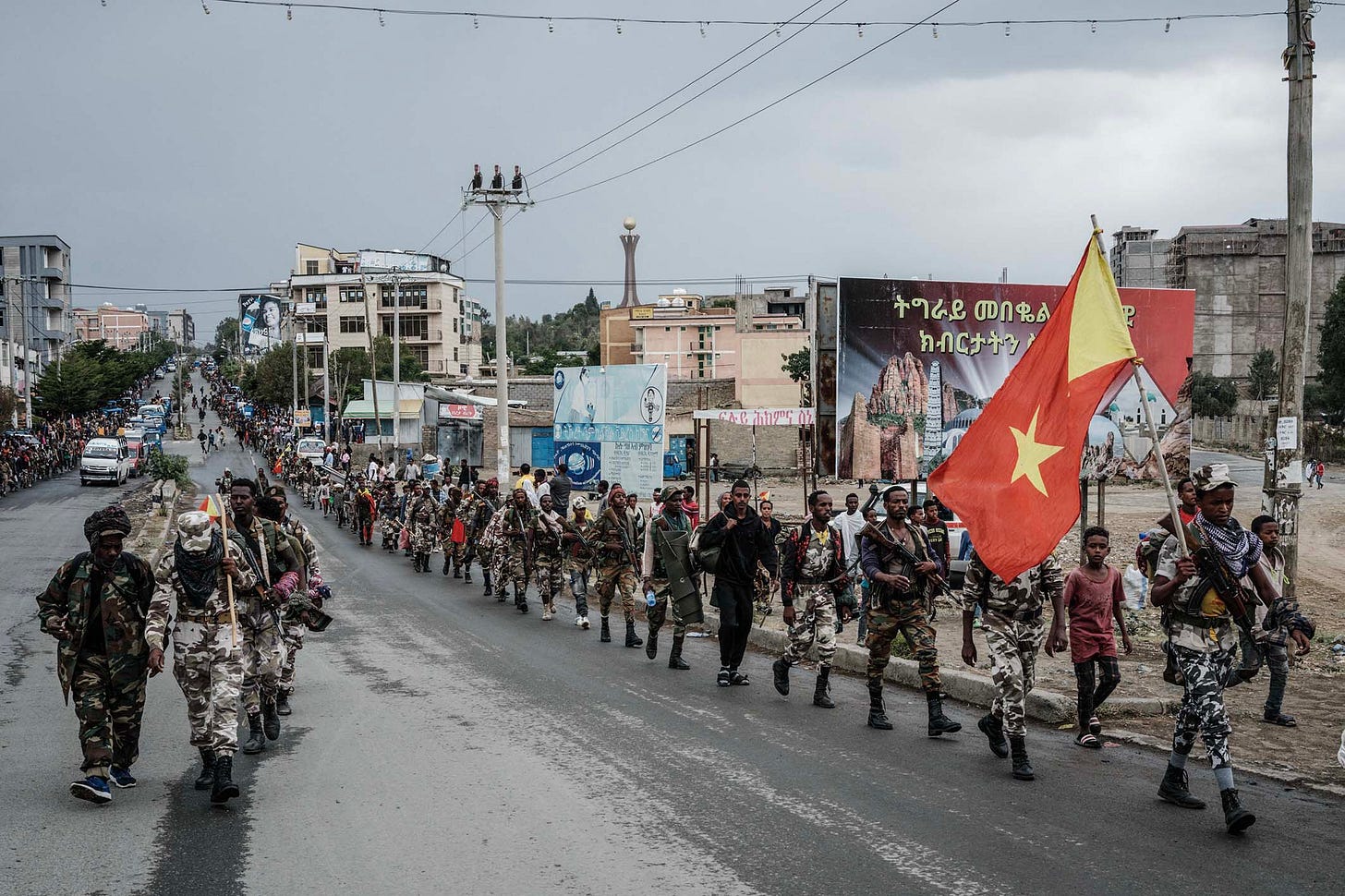To internal conflict, add internal conflict
The TPLF is tearing itself apart, which could further destabilise Tigray and Ethiopia.
Yohannes Woldemariam

The Tigray People’s Liberation Front (TPLF) was founded in 1975 to resist the repressive Derg regime in Ethiopia. It subsequently waged a formidable armed struggle and, when the Derg collapsed in 1991, hastily organised a coalition with other ethnic elites to fill the power vacuum. But now out of power itself, the TPLF is beset with internal disagreements that threaten to further destabilise Tigray and the country.
Under the charismatic Meles Zenawi, the TPLF became the country’s dominant political force – holding together Ethiopia’s complex ethnic mosaic through a combination of economic delivery, repression and the (rarely implemented) promise of self-government. After the death of Meles in 2012, its new leadership lacked his nous and popularity, and lost control of the government.
In 2018, they retreated to Tigray following Abiy Ahmed’s rise to power as prime minister. Soon, they were at war with Abiy, who had centralised power under his control, undercutting regional power centres and its holders, like the TPLF in Tigray.
The two-year Tigray war between the TPLF and Abiy’s forces devastated the region’s residents and infrastructure alike. The conflict only stopped because a peace deal was signed, but the precise implications of that agreement are ambiguous and there is now conflict within the TPLF about how it should be interpreted.
On the surface the disagreement is about whether the TPLF should compromise with Abiy or take a hardline approach. Some TPLF leaders were disappointed when the National Election Board of Ethiopia rejected its application to be fully reinstated as a political party. Instead, the electoral authority declared the TPLF to be a new political party that would have to operate under special conditions, in line with new legislation detailing how legal recognition can be returned to groups with a “history of violent activities”.
“We will never register as a new party,” said TPLF chairman Debretsion Gebremichael. This position was immediately contradicted by the TPLF’s vice chair, Getachew Reda, who issued a scathing statement that accused other TPLF leaders of corruption and described Gebremichael’s actions – including his efforts to organise a party congress – as “illegal movements by a group that does not represent the TPLF”.
The infighting between Gebremichael and Reda has deeper roots. It is as much about a long-running power struggle to control the TPLF as it is about how to respond to Abiy and the electoral board. It reflects a history of factionalism within the TPLF, which has included purges, expulsions and a split in 2001 that saw some prominent leaders imprisoned.
When it was strong and had momentum, the TPLF could endure these splits and reconstitute itself. The current splits come when the movement is at its weakest point for a generation.
Given the intensity of the divisions, there is a serious risk of internal conflict within Tigray, which can only undermine the prospects for postwar reconstruction.
A disunited Tigrayan front is also likely to complicate progress in the peace process, as local fragmentation in other regions has. In turn, that will add to the many challenges facing Abiy as he attempts to deal with a perfect storm of rising food prices, growing instability in regions such as Amhara, and rising tensions with nearby governments.
Much will depend on what happens to the Tigray Defence Forces, which are estimated to number 200,000. If the forces split or take sides between Gebremichael and Reda, Tigray and Ethiopia could enter uncharted territory.



